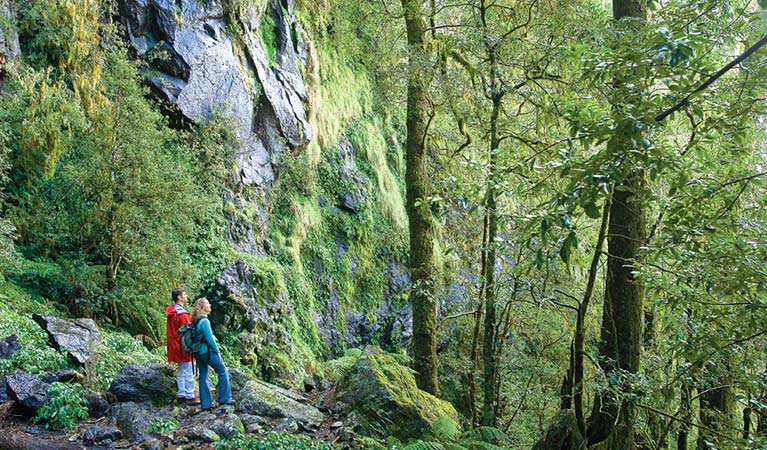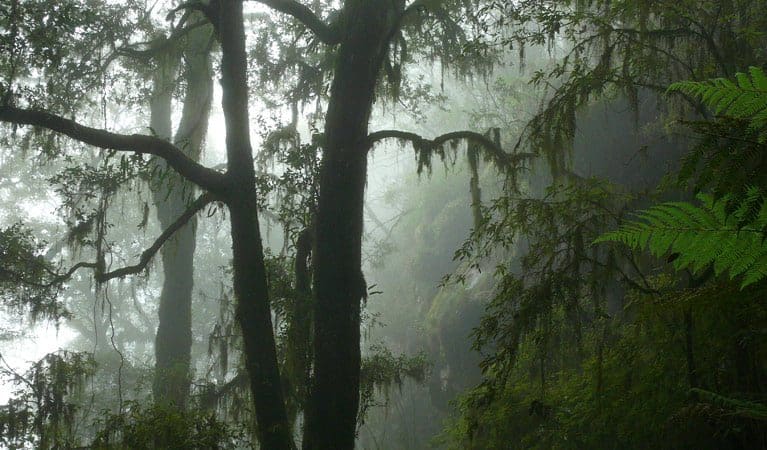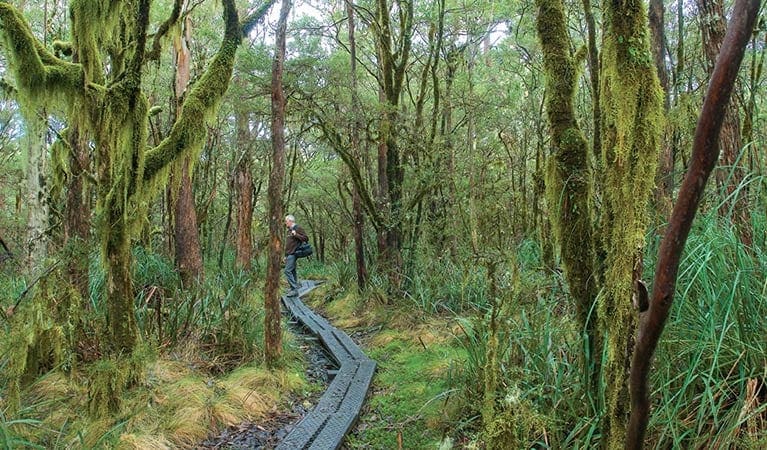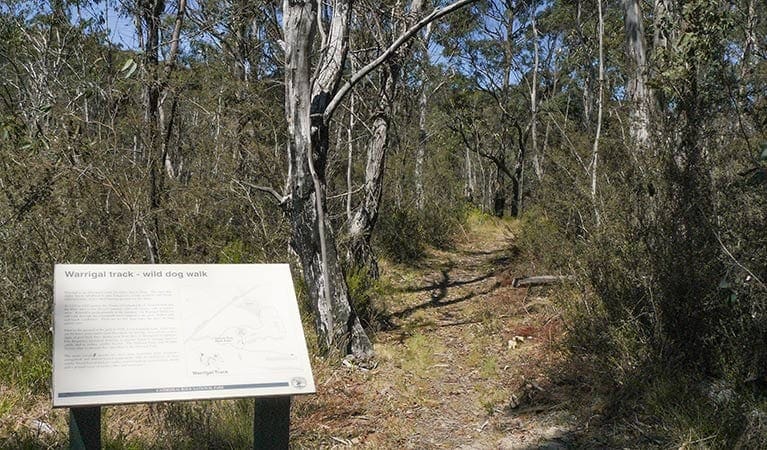Hike at a Glance
Max elevation: 0m
Min elevation: 0m
Total Ascent: 0m
Hike overview
Lyrebird walking track is a 5.5km circuit walk through New England National Park that takes walkers through an enchanting range of environments, including eucalypt forest and cool temperate rainforest, along basalt cliffs and past babbling brooks, historic signposts, waterfalls and colourful heath. Marvel at a constantly changing feast of expansive views. At dawn, valley-mist swirls like a white lake between the higher peaks and rises to embrace early morning walkers. Immerse yourself in the ancient Gondwana where the calls of the superb lyrebirds may be heard echoing up and down the valleys, especially in winter when the males' mating calls reach a crescendo. King parrots and crimson rosellas swerve through the treetops whilst yellow-tailed black cockatoos screech into the valleys below. Rufous and grey fantails are also intriguing to watch as their tails are splayed and angled to manoeuvre quickly after flying prey. If you'd prefer a shorter walk, return to Banksia Point via Tree Fern Valley (1.5km). This walk also links to Eagles Nest walking track (7km) or Wrights lookout walking track and Cascades walking track (9.3km).
Tips
The weather in this area can be extreme and unpredictable, so please ensure you're well-prepared for your visit.
Remember to take your binoculars if you want to birdwatch
Visit NSW National Parks and Wildlife Service for more information on this trail.
The longitude and latitude of the start and end points are approximately only and should not be used for navigation purposes. Please contact me if you know the correct coordinates.
Gallery
Got some great shots from this hike? Upload your photos here to inspire others and show off the beauty of the trail!
Click to view form >>
Submitting your photos doesn’t mean you lose ownership. You can be credited for your contributions, and you can request removal at any time.
Content use
Please don’t copy GPX files or content from this site to AllTrails or other platforms. Each trail has been personally mapped, documented, and refined to support Australia’s bushwalking and hiking community. While some details come from land managers, every listing reflects significant personal effort. This is a free, community-driven initiative—your respect helps keep it that way.
Walk map and GPX file
It looks like I don’t have a GPX file for this trail yet. If you have one to share, please email it to me! I’ll verify it against official maps before adding it to help other hikers have a safer, easier experience. Thanks for contributing to a better hiking resource.
Getting there
Getting to the trailhead: New England National Park.
Lyrebird walking track is in the Point lookout precinct of New England National Park. To get there:Turn onto Point Lookout Road from the Waterfall Way halfway between Armidale and DorrigoContinue for approximately 13kmTurn right at the sign to Banksia Point, 1km before Point lookout Parking Parking is available at Banksia Point.
Closest towns to this walk: Armidale, Dorrigo, Ebor, Guyra, Inverell, Uralla, Walcha, Wollomombi
About the region
Located in the Northern Tablelands of NSW, New England National Park is a place of spectacular beauty and pristine wilderness. Part of the Gondwana Rainforests of Australia World Heritage Area, it offers visitors an unforgettable holiday experience or a peaceful weekend getaway.
Discover the ancient world sealed in Gondwana rainforest, wander through snow gum forests dotted with crimson rosellas, and see breathtaking views from the Great Escarpment on one of the many walking tracks. Walks range from an easy 200m stroll to multi-day hikes through remote wilderness.
Experience sensational sunrises and breathtaking views stretching over forested valleys all the way to the coast from Point lookout. Pack a picnic and spend a few hours admiring the spectacular view before you.
Similar walks nearby
Looking for more walks in or near New England National Park? Try these trails with a similar difficulty grade.
Track grade
Grade 3 (Moderate) - Walks for Most Fitness Levels: Grade 3 on the AWTGS represents moderate walking tracks. These are ideal for walkers with some fitness who are comfortable with some hills and uneven terrain. While suitable for most ages, some bushwalking experience is recommended to ensure a safe and enjoyable experience. Tracks may have short, steep hill sections, a rough surface, and many steps. The total distance of a Grade 3 walk can be up to 20 kilometers.
Explore safe
Plan ahead and hike safely! Carry enough water, pack layers for changing conditions, and bring safety gear like a torch, PLB, and reliable communication device. Check official sources for trail updates, closures, and access requirements, and review local weather and bushfire advice. Most importantly, share your plans with someone before you go. Being prepared makes for a safer and more enjoyable hike! Stay Safe, Explore More, and Always #ExploreSafe.
Packing checklists
What you carry in your pack depends on factors like weather, terrain, and your adventure type. Not sure what to bring? My free planning, food, and packing checklists are a great starting point, covering day hikes, overnight trips, and multi-day adventures. Use them to customise your kit and always prioritise safety.
Let someone know
Before heading out, take a moment to fill out your trip intentions form. It’s a quick way to share your hike details with family or friends. If something goes wrong, they can notify emergency services, ensuring a faster response and peace of mind. Stay safe and enjoy your adventure
Suggest an edit
Spotted a change on this trail? Maybe there are new features, the route has shifted, or the trail is permanently closed. Whatever the update, I’d love your input. Your feedback helps fellow hikers stay informed and ensures that our trail info stays fresh and reliable.
Acknowledgement of Country
Trail Hiking Australia acknowledges the Traditional Owners of the lands on which we hike and pay respects to their Elders, past and present, and we acknowledge the First Nations people of other communities who may be here today.






